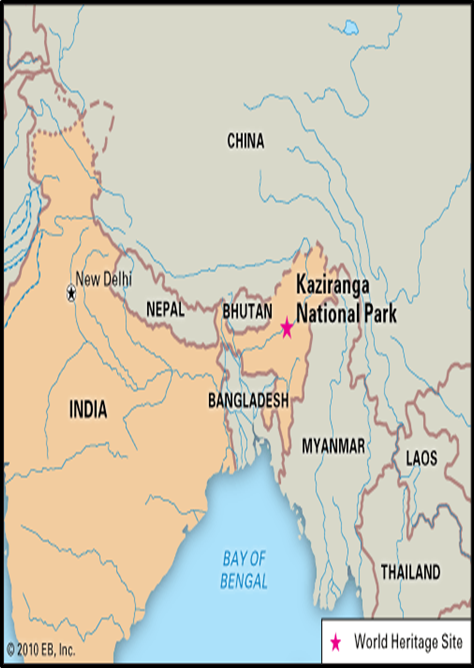“KAZIRANGA INFRA WORK DISRUPTS WILDLIFE MOVEMENT, SAY ENVIRONMENTALISTS”
Why in the news?
- Environmentalists warn that developmental work in Kaziranga National Park’s wildlife corridors, including solar flood lights and road barriers, is disrupting wildlife movement.
- Activist Rohit Choudhury highlighted these issues, prompting responses from park authorities and the Public Works Department.
source:eduhub
About Kaziranga National Park:
- Location: Golaghat and Nagaon districts, Assam
- Establishment: Declared a national park in 1974
- UNESCO Status: World Heritage Site, housing two-thirds of the world’s greater one-horned rhinoceros
- Area: Largest undisturbed area in the Brahmaputra Valley floodplains.
- Vegetation: Eastern wet alluvial grasslands, semi-evergreen forests, tropical moist deciduous forests.
- Flora: Elephant Grasses- Dense and tall, intermixed with small swamplands.
- Fauna: One-horned rhinoceros, leopard, fishing cat, lesser cats, royal Bengal tiger, large Indian civet, small Indian civet, sambar, barking deer, hog deer, gaur, hog badger, capped langur.
What is Wildlife (Protection) Act, 1972:
Associated Article: https://universalinstitutions.com/kaziranga-national-park/ https://universalinstitutions.com/wildlife-protection-act-1972/ |




